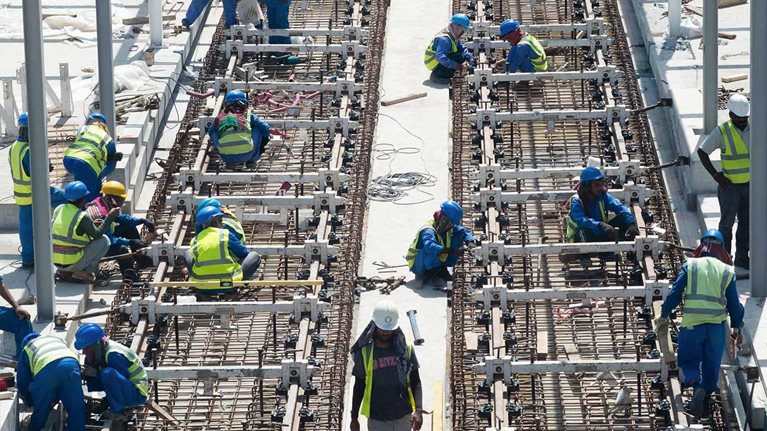Interview transcript
Martin Stanley, global head, infrastructure and real assets, Macquarie Group: There's a huge amount of institutional capital that's available to invest. The challenge really is making those projects investible.
Isabel Dedring, global transport leader, Arup: There’s very poor understanding, I think, within the industry about that gap, because people in the private sector are expecting government and public-sector individuals to develop the investible projects.
If you’re a financial institution, you only ever see projects that are fully baked up, so you don’t understand why these projects aren’t coming to the table. On the public-sector side, we don’t have an understanding of financial institutions, typically.
It's very easy to sort of just lob bricks over the fence.

Global Infrastructure Initiative
Convening global leaders in infrastructure and capital projects in pursuit of new solutions
Martin Stanley: The private sector will always say that the risk is too great and therefore the reward ought to be sizable. And the public sector—or the people that are actually paying for it—will be looking at it and saying, OK, well, we need to make sure that we're effectively compensating people for taking this risk appropriately. And the danger is that the gap between the two is so great that you end up either overpaying for a project or squeezing the return so much that the project never actually happens.
Roberto Fantoni, senior partner, McKinsey: An infrastructure investment has risk in three horizons. The first horizon, there will be risk associated with the construction. Large investments are known for going over budget and over time. In the second horizon, there will be risks associated with the operation, especially the ramp-up. To what extent will that asset be used to its full potential during its lifetime? There's a third horizon, which are the long-term implications of that infrastructure investment to overall economic development—that, in many cases, is very hard to measure and, as a consequence, it is very difficult to allocate the specific risks associated with whether or not that benefit will materialize.
James Cameron, cohead of IRG Asia-Pacific, HSBC Singapore: I think from a particular developer or investor perspective, they should be looking at combining international-knowledge best practice with a local domestic overlay. Especially here in Asia in emerging markets, that local context is extremely important. It's partnerships locally with well reputed, experienced partners who can understand and help manage some of those local risks.
We’ve also seen in some projects a role for government in terms of having an ongoing shareholding role within the project, which provides an alignment of interest between the investor and the government side.
Isabel Dedring: You need to have somebody who's a deal maker, basically, who can bring the parties together–especially in a world where increasingly people are looking for value capture, economic uplift, and all these other funding streams that need to come into the piece of infrastructure at the outset.
Lincoln Leong, chief executive officer, MTR Corporation: In our case, at MTR in Hong Kong, this model means we’re developing properties above our stations and above our depots. That value capture allows for, effectively, a mechanism to take external benefits and put it internally into a project.
Given the very long-term nature of these infrastructure businesses, a sustainable business model is so critical. Today, not only are we building new infrastructure—new rail lines in our case in Hong Kong—we're looking at how we can upgrade, update, and refresh some of our existing infrastructure. We’re looking at what our stations would look like in 2030.
What we’re finding is that with a model like this, it's very important to be working together and in collaboration with the various different authorities from day one.
Looking at alignments, looking at stakeholders, and looking at stakeholder requirements to then have an integrated system to encompass this rail property model. So, it's collaboration, it's planning, it's up-front development.
Read the best ideas that emerged during the 2017 GII Summit in the Summit outcomes report.
